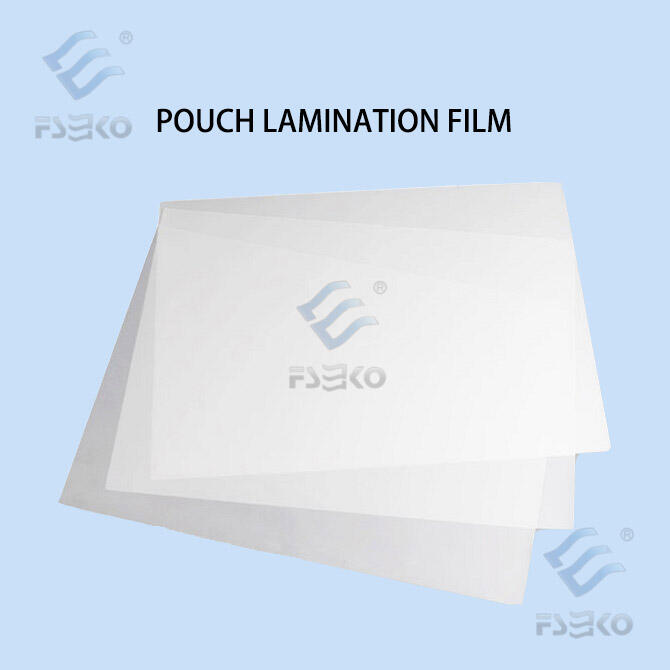Key Advantages of Soft Touch Film in Thermal Lamination
Superior Tactile Experience for Premium Packaging
Soft touch films offer a velvety texture that significantly enhances the sensory experience for consumers, making products feel more luxurious. This tactile quality can have a profound impact on consumer purchasing behavior. Research indicates that soft touch finishes often lead to a higher perceived value, influencing buyers' decisions in favor of products that feature this premium packaging. Brands utilizing soft touch finishes often see improved customer satisfaction and loyalty, as consumers associate the tactile quality with enhanced product quality. Thus, incorporating soft touch films into packaging designs not only elevates the visual appeal but also boosts the perceived value and consumer engagement with the brand.
Enhanced Heat Resistance and Durability
Soft touch films are engineered to withstand higher temperatures, making them ideal for various thermal lamination processes. Their durability ensures robust protection for packaging, reducing waste and safeguarding the products inside. Compared to traditional films, soft touch films demonstrate superior longevity, resulting in a lower rate of damage to packaged items. Statistical comparisons between products using soft touch films and conventional films highlight the reduced incidence of wear and tear, underscoring the films' efficacy in maintaining the integrity of packaging over time. This resilience is particularly advantageous in sectors where product appearance and shelf life are vital considerations.
Compatibility with Digital Printing Techniques
The compatibility of soft touch films with various digital printing methods ensures high-quality outcomes, offering vibrant colors and sharp images that enhance the overall aesthetic appeal. Such adaptability allows printers to seamlessly integrate soft touch films into existing workflows, minimizing downtime and enhancing efficiency. Digital printers can benefit from incorporating these films due to the ease of use and the resultant elevating of printed materials to a more refined and sophisticated level. This capability is especially valuable in today’s competitive market, where the visual representation of printed materials can significantly influence consumer preferences and brand perceptions.
Applications of Soft Touch Thermal Lamination Films
Luxury Packaging Solutions for Consumer Goods
Soft touch thermal lamination films are predominantly used for luxury packaging, providing an elegant finish for consumer goods such as cosmetics and high-end electronics. These films elevate brand perception by delivering an experience of quality and exclusivity that appeals to affluent consumers. In the competitive luxury market, where the tactile and visual appeal of packaging can greatly influence purchasing decisions, soft touch films offer a distinct advantage. Case studies show that brands incorporating soft touch films in their packaging often report increased market share, demonstrating the effectiveness of premium finishes in enhancing brand value and consumer engagement.
Industrial Uses in Flexible and Rigid Substrates
The versatility of soft touch films allows for their application on both flexible and rigid packaging substrates, expanding their industrial usage. In demanding environments such as automotive and electronics industries, these films provide essential protection against scratches and wear, thereby enhancing the longevity and aesthetic of the product. These features make soft touch films a practical choice for industries focused on maintaining the functional and visual integrity of their products. By highlighting sectors where these films are increasingly adopted, the industry can better appreciate their practicality, ensuring long-lasting usage and appearance in a variety of conditions.
Eco-Friendly Laminating Film vs Traditional Options
Sustainable Material Composition
Eco-friendly laminating films stand out in the market due to their sustainable material composition. These films are crafted from renewable resources, such as plant-based polymers, and often meet sustainability certifications like the Forest Stewardship Council (FSC). With increasing awareness of environmental issues, consumer market trends indicate a preference for products that emphasize sustainability. Research data shows that eco-friendly laminates have biodegradable properties, contrasting with traditional plastics that linger in landfills for centuries, thus substantiating the environmental benefits of sustainable packaging.
Reduced Environmental Impact Through Recyclability
The recyclability of eco-friendly laminating films significantly reduces their environmental impact compared to traditional options. These films are intentionally designed for recyclability, thereby playing a vital role in reducing landfill waste. Statistics highlight recycling rates for these eco-friendly films are higher than those of conventional laminating materials, offering clear environmental benefits. Furthermore, lifecycle analysis reveals that soft touch films exhibit a lower environmental footprint compared to non-recyclable conventional films, promoting their use among environmentally conscious consumers and businesses.
Optimizing Heat Lamination Processes
Selecting the Best Thermal Laminating Equipment
Choosing the right thermal laminating equipment is crucial to optimizing performance and production efficiency, especially when working with soft touch films. Consider machines that are specifically designed to enhance the tactile feel of such films, ensuring that they are produced without compromising quality. Here are a few tips on selecting the best lamination equipment:
- Types of Laminators: For small offices, compact and entry-level models might suffice, while large production facilities require high-capacity machines with advanced control settings.
- Expert Recommendations: Consult industry experts or reviews to get insights into recommended machines. Their guidance can be invaluable in making an informed investment that suits your operation's needs.
By selecting appropriate lamination equipment, businesses can ensure that their operations run smoothly and efficiently, leading to higher-quality outputs and satisfied customers.
Maintaining Consistent Quality in High-Volume Production
To maintain consistent quality during high-volume production, implementing regular maintenance schedules for lamination machines is essential. This proactive approach helps avoid unexpected breakdowns and ensures optimal machine performance. Here are critical strategies to achieve consistent quality:
- Regular Maintenance: Establish a routine check and service schedule that includes cleaning rollers, checking heat settings, and ensuring that parts are functioning correctly.
- Common Issues and Solutions: Be aware of frequent issues like film jamming or uneven lamination, and equip operators with the knowledge to resolve these swiftly, minimizing downtime.
- Quality Control Measures: Employ statistical methods to monitor production efficiency continually, adjusting processes where necessary to maintain high standards.
These strategies not only improve reliability and output quality but also boost overall production efficiency, providing a competitive edge in manufacturing soft touch films.
Implementing Soft Touch Films in Your Workflow
Where to Source Quality Laminating Films
Finding a reliable supplier for soft touch thermal lamination film is crucial for ensuring high-quality finishes. You can identify trustworthy vendors by looking for those with certifications or a proven track record in product quality. Prioritizing suppliers with strong reputations helps maintain consistency and reliability in your lamination projects. Consider exploring both local suppliers and online platforms to expand your options and possibly uncover more competitive pricing. An insightful approach is to create a list of reputable manufacturers, such as KANGLONG, known for producing various specialized lamination films, including anti-fingerprint and scratch-resistant options. This will help streamline the decision-making process and ensure access to top-tier materials.
Cost-Effective Solutions for Office and Industrial Use
Implementing soft touch films can be cost-effective when approached strategically. There are several ways to integrate these materials into your business while staying within budget constraints. Firstly, explore bulk purchasing options to reduce costs per unit and consider partnerships with suppliers for long-term savings. Such arrangements can especially benefit businesses with high-volume lamination needs. For example, some companies have successfully reduced costs by negotiating directly with suppliers and committing to larger volumes. Additionally, examining successful case studies from various sectors can illustrate potential savings. Whether in office settings or industrial environments, observing how others effectively utilize and manage soft touch films can inform strategic planning and implementation. Exploring these solutions can ensure you maintain quality while enhancing cost-efficiency in your lamination process.


